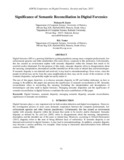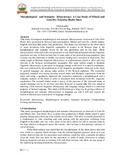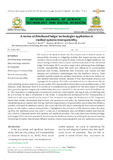Significance of Semantic Reconciliation in Digital Forensics
Abstract
Digital forensics (DF) is a growing field that is gaining popularity among many computer professionals, law
enforcement agencies and other stakeholders who must always cooperate in this profession. Unfortunately,
this has created an environment replete with semantic disparities within the domain that needs to be
resolved and/or eliminated. For the purpose of this study, semantic disparity refers to disagreements about
the meaning, interpretation, descriptions and the intended use of the same or related data and terminologies.
If semantic disparity is not detected and resolved, it may lead to misunderstandings. Even worse, since the
people involved may not be from the same neighbourhood, they may not be aware of the existence of the
semantic disparities, and probably might not easily realize it.
The aim of this paper, therefore, is to discuss semantic disparity in DF and further elaborates on how to
manage it. In addition, this paper also presents the significance of semantic reconciliation in DF. Semantic
reconciliation refers to reconciling the meaning (including the interpretations and descriptions) of
terminologies and data used in digital forensics. Managing semantic disparities and the significance of
semantic reconciliation in digital forensics constitutes the main contributions of this paper.
Collections
Related items
Showing items related by title, author, creator and subject.
-
Morphological and Semantic Idiosyncrasy: A Case Study of Mbusii and Lion De; Teketeke Radio Show
Kandie, Vitalis (KABARAK UNIVERSITY, 2019-10-16)This study investigated morphological and semantic idiosyncrasies witnessed in Teke-Teke Radio Show presented by Kenyan radio personalities, Mbusii and Lion De, a Radio Jambo, English cum Kiswahili prime time production. ... -
A review of distributed ledger technologies application in medical systems interoperability
BUNDI, DOROTHY.G; KARUME, SIMON.M; MUTUA, STEPHEN.M (2023)This study of the literature delves into the complex area of medical systems interoperability, focusing on mitigating variables that impact security and data transfer at the structural and semantic levels. In the era of ... -
E2012-03: Participatory Approach to Community Development through Education for Sustainable Development
Misava, Ombajo E.; Otieno, Nam P.; Kaluki, Ngumbi E. (NA, 2012)The United Nations Conference on Environment and Development (UNCED) held in Rio de Janeiro in 1992 recognized education as an important tool for enhancing the attainment of sustainable development. Chapter 36 of Agenda ...




